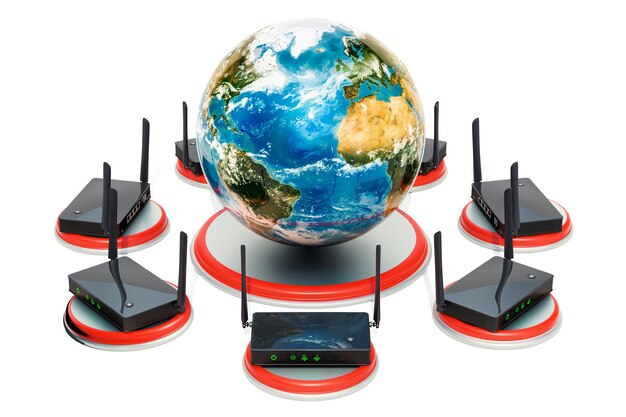What Are Internet Chocks?
Internet chocks are a phenomenon that many digital users experience without fully understanding their origins. These refer to interruptions, slowdowns, or complete blockages of internet access caused by network congestion, infrastructure limitations, or intentional restrictions. As our reliance on the internet grows, so does the occurrence of these disruptions, making them a critical issue for governments, businesses, and individuals alike.
How Internet Chocks Affect Global Connectivity
The internet is a backbone for modern communication, commerce, and education. When internet chocks occur, they hinder the seamless flow of data, disrupting day-to-day activities. Whether it’s streaming a video, attending a virtual meeting, or conducting an online transaction, internet chocks can bring operations to a standstill.
The global impact of this extends beyond personal inconvenience. In developing regions, where digital inclusion is already a challenge, these disruptions exacerbate the digital divide. Businesses reliant on e-commerce face revenue losses, while educational institutions struggle to provide consistent online learning opportunities.
Common Causes of Internet Chocks
One primary cause of internet chocks is bandwidth congestion. When too many users attempt to access the internet simultaneously, the network becomes overwhelmed, leading to slower speeds and interruptions. This is particularly evident during peak usage hours or significant online events such as live streams or gaming tournaments.
Another factor is outdated infrastructure. In many areas, internet service providers (ISPs) operate on aging equipment that cannot keep up with the increasing demand for high-speed connections. Furthermore, cyberattacks like Distributed Denial of Service (DDoS) attacks can deliberately choke networks, causing widespread disruption.
Policy-driven restrictions also play a role in creating internet chocks. Governments in some regions impose bandwidth limitations or shut down access entirely during political unrest or social movements. These actions are intended to control information flow but often result in unintended economic and social consequences.
The Economic Implications of Internet Chocks
For businesses, it can mean lost revenue and productivity. Companies that depend on cloud-based tools, digital marketing, or e-commerce platforms are particularly vulnerable. A sudden disruption can lead to missed sales opportunities, delayed projects, and frustrated customers.
On a broader scale, it impact the global economy. As more industries digitize their operations, reliable internet access becomes a cornerstone for economic growth. Interruptions can deter foreign investments, disrupt supply chains, and create inefficiencies that ripple across sectors.
Social and Educational Consequences
The social implications of this are profound. Access to the internet is no longer a luxury but a necessity for communication and social interaction. When people experience disruptions, they lose the ability to connect with loved ones, access news, and participate in digital communities.
In the education sector, internet chocks create barriers to learning. With the rise of online education platforms, students depend heavily on uninterrupted internet access. Disruptions lead to missed classes, incomplete assignments, and limited access to educational resources, widening the gap between those with reliable connectivity and those without.
Technological Solutions to Combat Internet Chocks
To address the challenge of internet chocks, technological innovations are crucial. Upgrading infrastructure is one of the most effective solutions. Governments and ISPs must invest in modern fiber-optic networks and 5G technology to handle growing data demands efficiently.
Content Delivery Networks (CDNs) also play a significant role in reducing congestion. These networks distribute content across multiple servers, ensuring that data reaches users faster and with fewer interruptions. CDNs are particularly beneficial for websites with high traffic volumes, such as e-commerce platforms and video streaming services.
Another promising solution is edge computing. By processing data closer to the source rather than relying on centralized servers, edge computing minimizes latency and reduces the risk of internet chocks. This technology is especially valuable in remote areas with limited connectivity.
Policy Changes to Mitigate Internet Chocks
Governments and regulatory bodies must adopt policies that promote digital inclusivity and prevent internet chocks. One approach is to encourage competition among ISPs, driving improvements in service quality and infrastructure development. Subsidies for rural internet expansion can also bridge the connectivity gap in underserved regions.
International collaboration is essential to combat cyberattacks that contribute to this. By sharing information and resources, countries can strengthen their defenses against threats like DDoS attacks. Additionally, policymakers must strike a balance between security measures and ensuring uninterrupted access for citizens.
The Role of Businesses in Preventing Internet Chocks
Businesses also have a responsibility to address internet chocks. Companies that rely heavily on online operations should adopt best practices such as load balancing and traffic management to reduce the strain on networks. Partnering with reliable ISPs and implementing backup systems can minimize the impact of disruptions.
Moreover, businesses can advocate for better internet policies by collaborating with industry groups and policymakers. By voicing their concerns and supporting initiatives for improved infrastructure, companies can contribute to a more resilient digital ecosystem.
Future Trends and Innovations
As technology evolves, new trends and innovations will emerge to address this. The rollout of 6G technology promises even faster speeds and greater network capacity, potentially eliminating many of the issues associated with congestion. Satellite internet services like Starlink are also making high-speed connectivity accessible in remote areas, reducing the risk of chocks.
Artificial Intelligence (AI) will play a significant role in network management. AI-driven tools can predict traffic patterns, optimize data flow, and identify potential issues before they escalate into widespread disruptions. These advancements will make networks more efficient and reliable, paving the way for a future with fewer internet chocks.
How Individuals Can Navigate Internet Chocks
While large-scale solutions are essential, individuals can take steps to mitigate the effects of internet chocks in their daily lives. Using a wired connection instead of Wi-Fi can improve speed and stability. Regularly updating software and devices ensures compatibility with modern networks, reducing the likelihood of connectivity issues.
Limiting bandwidth-intensive activities during peak hours can also help. For example, scheduling downloads or video uploads during off-peak times can ease the strain on networks and improve overall performance. Using Virtual Private Networks (VPNs) can bypass certain restrictions and maintain connectivity in regions prone to policy-driven internet chocks.
The Need for Collective Action
They are a complex issue that requires collective action from governments, businesses, and individuals. As our world becomes increasingly interconnected, ensuring reliable and accessible internet for everyone is no longer optional. It is a necessity for economic growth, social inclusion, and global progress.
Conclusion
Internet chocks are a growing concern in the digital age. From bandwidth congestion to policy-driven restrictions, these disruptions impact every aspect of modern life. By investing in infrastructure, adopting technological solutions, and implementing thoughtful policies, we can address the root causes of internet chocks and create a more resilient internet for all.










